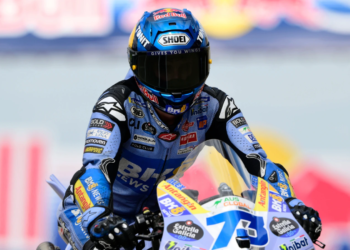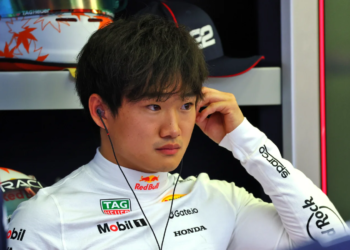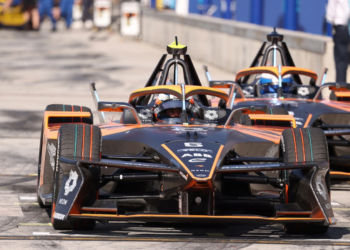The European Grand Prix has forever been a recurring staple in the Formula One calendar, featuring a vast array of circuits across the continent and producing some rather exceptional races along the way.
Whilst many fans of the modern era will immediately think of the iconic Nurburgring in Germany or the intriguing Valencia Street Circuit in Spain, the roots of the European Grand Prix extend further than you may think.
Since 1923 the European Grand Prix has been held 56 times, 22 as a standalone event and a further 34 times as a honorific title.
Prior to the 1983 season, the European Grand Prix was a title which was issued to an existing European race each season.
The first race to receive such a title was the Italian Grand Prix at Monza in 1923, during the dangerous pre-war era of Antonio Ascari, Carlo Salamano and Giuseppe Campari.
When the Formula One World Championship was officially launched in 1950, the tradition of designating a European race as the European Grand Prix continued, with the inaugural race of the new championship receiving the honorific title at Silverstone in May.
Apart from the 1952 event which was run as a Formula Two race, the European Grand Prix title was a recurring theme until 1969, run of iconic circuits such as Nurburgring’s daunting Nordschleife, Monaco’s Monte-Carlo street circuit and the 14 km Spa-Francorchamps circuit.

After a brief hiatus between 1969 and 1971, the European Grand Prix returned for six more years until 1977 when the British Grand Prix at Silverstone became the last race ever to receive the title of the European Grand Prix as an honorific title.
It wasn’t until 1983 that the idea of a European Grand Prix returned to the F1 community, after plans to host a race in New York were cancelled only three months before the race was scheduled to go ahead.
This left the 1983 calendar one race short, and resulted in the track organisers at Brands Hatch throwing together last minute plans to create a European GP once again.
However, several aspects of the race were entirely different to the last running of the European GP in 1977.
This time around the race was no longer issued as an honorific title and instead the European GP was its own standalone event for the first time.
The eventual race was the penultimate round of the 1983 season, and was won by eventual world champion Nelson Piquet. The victory allowed Piquet to close the gap up to championship rival Alain Prost to just two points with only one race remaining.
With the return of the European GP as an official standalone race becoming an instant success, the race remained on the F1 calendar for the 1984 season.
However, in keeping with the previous tradition of being held in different nations each season, the 1984 event was run on the all-new Nurburgring GP circuit – incidentally one of the first tasks completed by future track designer Hermann Tilke.
Although the European GP retuned to Brands Hatch in 1985, a race which saw Nigel Mansell secure his maiden victory in F1, the race was dropped the following year and failed to return to the calendar until 1993 after plans for an Asian Grand Prix at the Autopolis circuit in Japan fell through.

But when it did return to the calendar as a standalone event once again, this time around the undulating Donington circuit in Leicestershire, the F1 fraternity were in for one of the most enthralling European races yet.
Despite qualifying fourth Ayrton Senna took to the tricky weather conditions like a duck to water during the opening lap of the race, scything ahead of Karl Wendlinger, future champions Michael Schumacher and Damon Hill and finally former team-mate and rival Prost to lead.
If that opening lap wasn’t enough to make the hairs on the back of your neck stand up, then the rest of the Brazilian’s race was simply poetry in motion as Senna completed four pit-stops in the ever-changing weather conditions – one of them whilst completing the fastest lap of the race – on his way to victory by well over a minute to Hill who was the only driver remaining on the lead lap.
From that day onwards the European GP assumed a special place in the hearts of many fans and members of the paddock alike, with the race visiting a new venue a year later in 1994 at Jerez in Spain towards the end of the season – alas without the star of the previous year.
For 1995 and 1996 the European GP returned to the Nurburgring GP circuit for the first time since 1985, with local hero Schumacher wowing his adoring home fans in 1995 and storming to an important victory whilst championship rival Hill spun out on the drying track.
In 1996 rookie Jacques Villeneuve brought the European GP back into the history books, as the future world champion secured his maiden victory in the sport after only four attempts for Williams.
Once again the European GP produced another iconic moment a year later in 1997, as the race retuned to Jerez after its two-year stint at the Nurburgring.
This time the race was run as the grand finale of what had been a thrilling season-long battle for supremacy between Villeneuve and Schumacher, which came to a controversial conclusion on Lap 48 when Villeneuve stormed up the inside of the Ferrari racer at the Dry Sack corner which resulted in a collision.

An onboard replay showed quite clearly that Schumacher had in fact twitched his steering wheel left before ramming it hard to the right in a clear attempt to take out Villeneuve. Instead the German was punted off of the Williams into the deep retaining gravel and trap and eventual retirement.
Villeneuve meanwhile clung on to secure third for Williams and the championship crown, albeit with hefty damage to his car.
Despite such a frenetic race in 1997 the European GP was not held in 1998 and instead retuned in 1999 for an equally entertaining race in changeable weather conditions.
This time the event had moved back to the Nurburgring in Germany, where it would remain until 2007 as a recurring event before the Nurburgring began to alternate with the Hockenheimring as the host of the German GP.
In that hectic 1999 race Pedro Diniz spectacularly barrel-rolled at the start after making contact with Alexander Wurz.
From there rain intervened and created a race to remember as numerous spills and thrills occurred up and down the order.
Eventually Johnny Herbert came across the line to secure a memorable maiden victory for Stewart Grand Prix, with team-mate Rubens Barrichello making the result even sweeter by finishing third and joining Herbert on the podium.
Meanwhile sheer heartache was felt across the F1 community when Luca Badoer ground to a halt in the Minardi from fourth with only a handful of laps remaining and what would’ve been one of the team’s best results in the sport.
In 2008 it was pastures new for the European GP, as its nine year spell at the Nurburgring came to a conclusion, with the event moving to a brand-new street circuit in Valencia for 2008.
The circuit, which was designed using the roads lining the Valencia harbour and America’s Cup port, produced an intriguing inaugural event which was won by championship contender Felipe Massa.
Fellow countryman Rubens Barrichello won the event a year later, whilst the 2010 race became renowned for the horrific accident between Mark Webber and Heikki Kovalainen.
Whilst trying to overtake the Finn Webber make contact with the rear of his Lotus, flinging him high in the air and retuning him back to the ground upside down in a crash reminiscent of his scary Le Mans shunts in 1999.
Miraculously both drivers were unscathed, however the ensuing safety car period resulted in controversy as the safety car was deployed as the field completed a lap, with Lewis Hamilton allegedly passing the safety car illegally as it exited the pit-lane.
After complaints made by Ferrari and Fernando Alonso, the Briton was struck with a drive-thru penalty for his misdemeanour whilst Sebastian Vettel won on his way to his first our four back-to-back championships.
The final race around the Valencia street circuit (and the final European GP to-date) in 2012 was by far the most exciting at the venue, with both reigning champion Vettel and Romain Grosjean falling foul of Renault’s alternator troubles.
Meanwhile Alonso stormed to a superlative victory on home soil for Ferrari, whilst Hamilton pushed too hard during the latter stages of the race and was subsequently overtaken by Kimi Raikkonen in the Lotus.
In a desperate attempt to remain on the podium Hamilton defended heavily against Pastor Maldonado during the closing laps, resulting in collision between the two and retirement for Hamilton.
This melee during the closing laps enabled Schumacher to rise through to third and secure the one and only podium finish during his return to the sport with Mercedes and his final podium finish even in F1.
So now you know the history of the European GP, a name initially issued to races as an honorific title before gradually assuming it’s own place in the foundation of F1.
Although the race has not been run since 2012 it has a knack of always finding its way back onto the calendar, and this year it will do so at probably one of the most intriguing venues to be added to the F1 calendar.
The Baku City Circuit has already gained a considerable following throughout it’s construction process over recent months, and there is no denying it will produce a thrilling race weekend.
The 6.006 km street circuit will be the sixth different venue to host a standalone European GP since 1983 – the first in Azerbaijan – and will join the likes of the Nurburgring, Donington and Jerez.
The European GP has always produced iconic moments in the sport, from the inaugural race all those years ago in 1950 at Silverstone, Mansell’s maiden victory at Brands Hatch in 1985, Senna’s unforgettable road to victory at Donington in 1993, Villeneuve and Schumacher’s controversial collision in 1997 to Herbert’s surprising one and only victory for Stewart Grand Prix in 1999.
Without a doubt the 2016 European GP around the streets of Baku will be a highlight of the season, and will only add to the memorable and colourful history that is the European Grand Prix.






